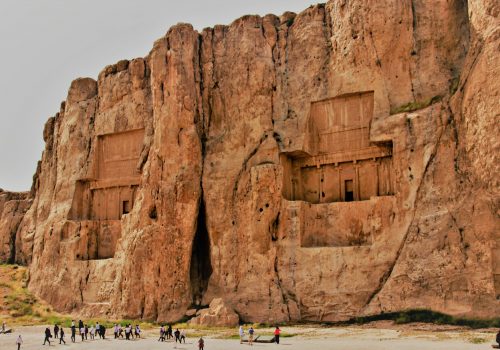Shiraz is one of the oldest cities of ancient Persia and is known as the city of poets, literature, wine (despite Iran being an Islamic republic since 1979), and flowers. It is also considered by many Iranians to be the city of gardens, due to the many gardens and fruit trees that can be seen in the city, for example Eram Garden. Shiraz has had major Jewish and Christian communities.
The crafts of Shiraz consist of inlaid mosaic work of triangular design; silver-ware; pile carpet-weaving and weaving of Kilim, called Gilim and Jajim in the villages and among the tribes.

I am text block. Click edit button to change this text. Lorem ipsum dolor sit amet

I am text block. Click edit button to change this text. Lorem ipsum dolor sit amet

I am text block. Click edit button to change this text. Lorem ipsum dolor sit amet

I am text block. Click edit button to change this text. Lorem ipsum dolor sit amet

I am text block. Click edit button to change this text. Lorem ipsum dolor sit amet

I am text block. Click edit button to change this text. Lorem ipsum dolor sit amet
The earliest reference to the city, as Tiraziš, is on Elamite clay tablets dated to 2000 BC. The modern city was founded or restored by the Umayyads in 693 and grew prominent under the successive Iranian Saffarid and Buyid dynasties in the 9th and 10th–11th centuries, respectively. In the 13th century, Shiraz became a leading center of the arts, due to the encouragement of its ruler and the presence of many Persian scholars and artists. It was the capital of Persia during the Zand dynasty from 1750 until 1800. Two famous poets of Iran, Hafez and Saadi, are from Shiraz, whose tombs are on the north side of the current city boundaries.

Vakil Bazaar is the main bazar of Shiraz located in the historical center of the city. It was Built in 1766 and It is the best traditions of Iranian urban architecture. The bazaar has beautiful courtyards, caravansarais, bath houses, and old shops it is among the best places in Shiraz to buy all kinds of Persian rugs, spices, copper handicrafts and antiques.

Narenjestan Ghavam house or mansion was built originally by the Qavams a rich and powerful family which ruled semi independently over Fars and the Persian Gulf coast; they were rich to the extent of the Qajar period. The construction of the mansion took almost ten years.




